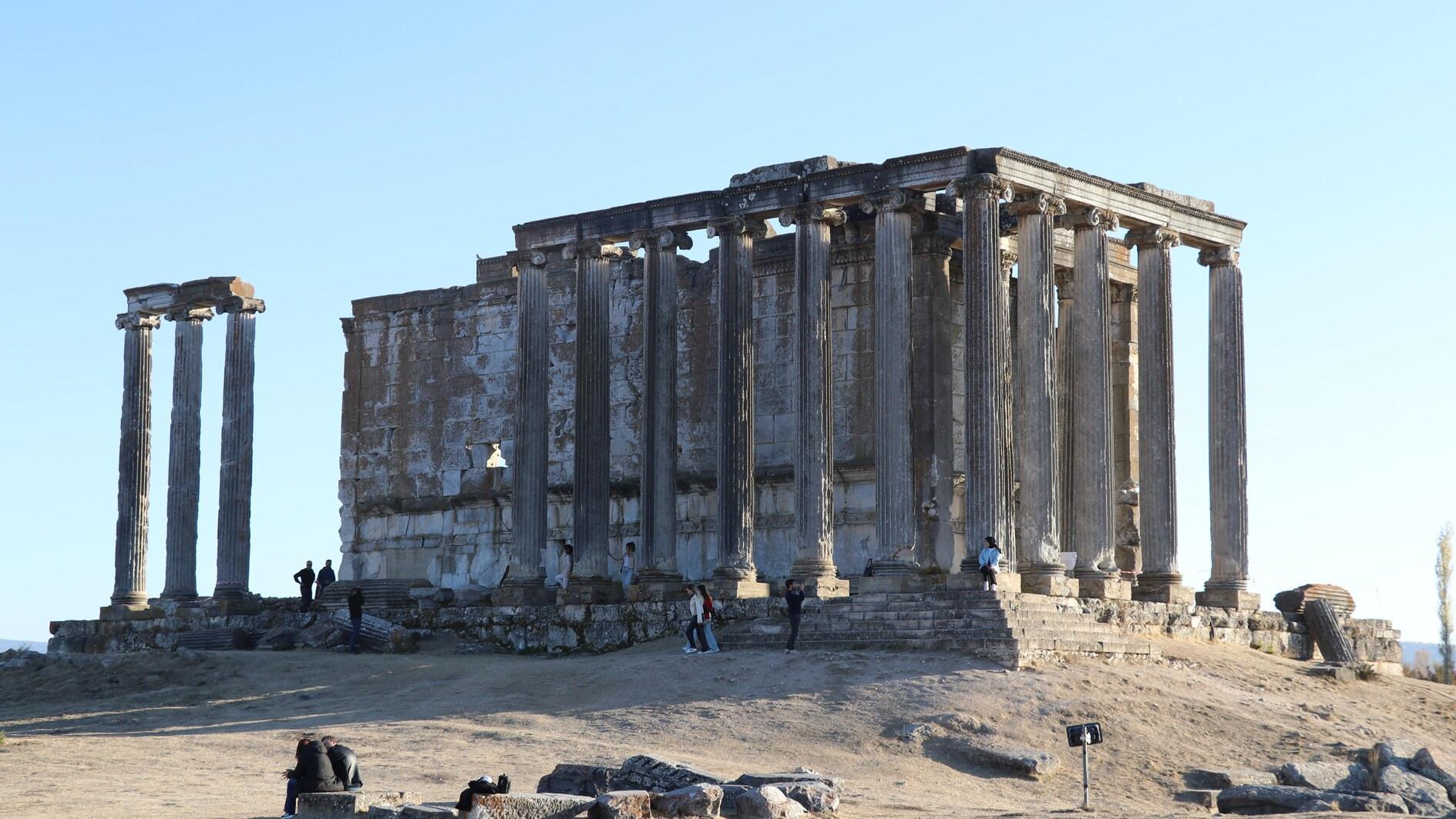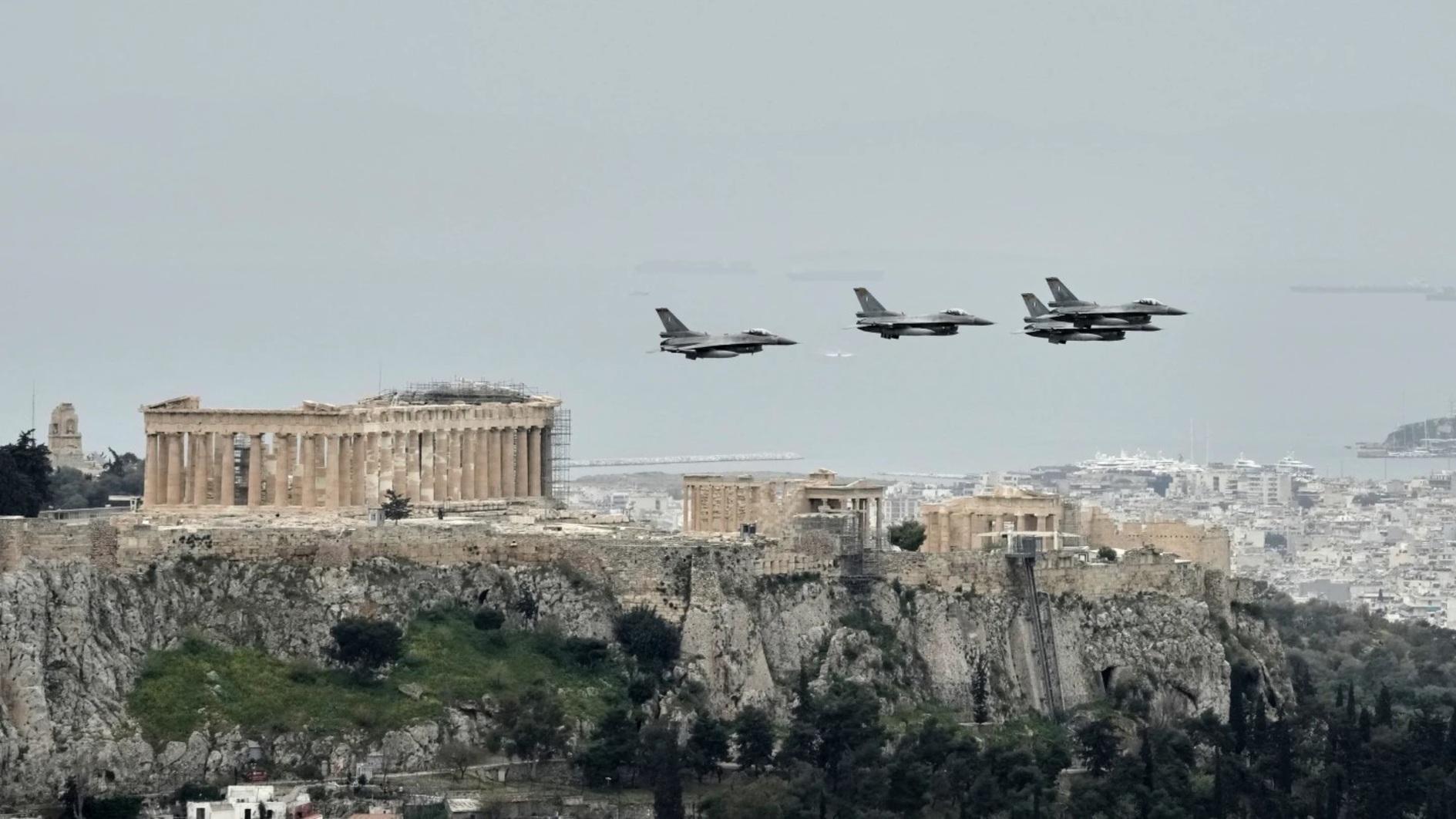Aizanoi diggings unearth monumental gate
KÜTAHYA

Archaeological excavations in the western province of Kütahya’s Çavdarhisar district have revealed a monumental gate structure, believed to be the entrance to the ancient city of Aizanoi, along with a rare 2,000-year-old terracotta theater mask, offering new insights into the region’s rich history.
Academics from various universities, along with 10 technical staff and 20 workers, are participating in the excavation work that continues in the ancient city, which is home to the best-preserved Temple of Zeus in Anatolia and was included in the United Nations Educational, Scientific and Cultural Organization (UNESCO) World Heritage Tentative List in 2012.
The head of the excavation, Professor Gökhan Coşkun, Chair of the Archaeology Department at Dumlupınar University (DPÜ) Faculty of Arts and Sciences, said that this season they primarily worked on the agora (marketplace) and stadium structures starting in May.
Stating that their work is continuing in the east tribune area of the stadium, Coşkun said, "Again, in the same area, we will bring the seating steps that collapsed during an earthquake to light. Additionally, we started moving the categorized stones here to a different area. In the coming years, we aim to fully reveal the tribune of the stadium by continuing excavations in these areas."
Coşkun explained that they are conducting restoration work to prevent rainwater from flowing into the basement of the Temple of Zeus to maintain its stability.
Noting that they reached three more shops in the agora, Coşkun said: "With the work on the southern wing of the west portico [colonnade] of the agora, we finished the excavation works here. Here, we uncovered the marble-paved courtyard of the agora, which is very well preserved, as well as column remnants, marble steps leading from the courtyard to the portico and the partially preserved marble flooring of the portico. This area has already started attracting the attention of visitors."
Coşkun stated that they were working in a Late Antiquity structure in the south of the agora.
Explaining that during the excavation carried out to understand the function of this structure, they realized it was the gate providing access to the city center, Coşkun said: "During our work, we also found another unexpected structure remnant. Some parts of the first floor of this two-story structure remain intact. We think that this public building, which we can date to the last quarter of the second century, might also be a monumental gate."
Coşkun provided the information that the facade architecture of this two-story structure has the characteristics known in archaeological literature as "aedicula," generally used in public buildings like theater scenes, monumental fountains, libraries and monumental gates.
Indicating that they also encountered superstructure elements belonging to this building, Coşkun said: "They were fallen and collapsed. Most had plant decorations with high craftsmanship. As a result of the excavation of the structure, we revealed its four podiums [bases]. Due to a registered village house behind the building, we couldn’t excavate the center, so we couldn't fully understand its function."
Coşkun emphasized that they believe this structure served as the entrance to the agora, where trade was bustling at the time.
Speaking about other findings, Coşkun said: "In the soil inside one of the podiums, various coins, a piece of an ivory figure and unexpectedly, a well-preserved terracotta theater mask were found. This theater mask provides new data and contributions to the Dionysian cult of Aizanoi. We know that this cult was a dominant one here. Indeed, our stadium and theater, unique in the world, are also indicators of this."
Coşkun added that in previous years they identified a similar mask placed as a grave gift in a tomb near the theater and that they believe the number of such artifacts will increase as the excavation progresses.
















